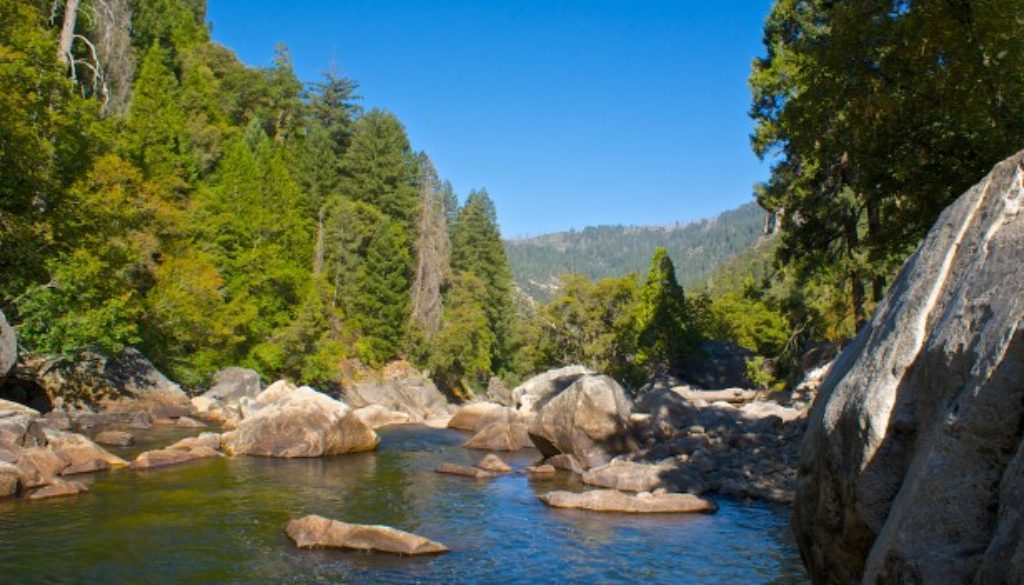How the Clean Water Act Could Become a Dirty Water Rule
By Christopher Williams, American Rivers
On February 14, the Trump Administration published a proposed federal rule that would roll back protection for streams and wetlands across the United States. But we don’t have this accept this awful valentine — Write to the Administration today and let them know that you support healthy rivers and clean water.Urge the Environmental Protection Agency (EPA) and U.S. Army Corps of Engineers (the Corps) to abandon this “Dirty Water Rule.”
The story behind this rule is a little complicated. Here’s the background:
The extent of the jurisdiction of the Clean Water Act (the Act) over the nation’s waters has been contested almost since the Act was passed into law in 1972. Opponents of the Act – associations purporting to represent developers, agricultural interests, and industry groups – seek to narrow the Act’s application, leaving as many of the nation’s streams and wetlands as possible beyond the law’s reach. Conversely, champions of rivers, wetlands and clean water – like your friends at American Rivers – argue that the Act’s call to protect the “waters of the United States” extends to the small streams and isolated wetlands that are so vital to clean water and the health of freshwater ecosystems. After all, we can’t adequately protect the waters of the U.S. if we ignore the small streams and wetlands from which they spring.
After two convoluted Supreme Court rulings created tremendous uncertainty about the extent of the Act’s reach, the Obama Administration engaged in a lengthy rulemaking process to clarify the authority of the Act to protect small streams and wetlands that are so important to river health and contribute to the drinking water supplies of one in three Americans. Following years of painstaking scientific, economic and legal analysis, hundreds of public meetings, and a comment period that produced over a million comments, the “Clean Water Rule” was adopted, reaffirming the Act’s broad authority. Shortly after taking office, President Trump and then-EPA Administrator Scott Pruitt launched an effort to sweep away this carefully crafted rule and once again expose hundreds of thousands of miles of small streams and wetlands to unregulated pollution and degradation.
The latest salvo in this effort is the new Dirty Water Rule proposed on Valentine’s Day. The proposed rule would strip the Act’s protection from ephemeral streams (those that flow only a short time after heavy rain and snowmelt) that are particularly important to fragile freshwater ecosystems in the desert Southwest and other arid parts of the country. Moreover, the proposed rule would throw into doubt the Act’s protection of intermittent streams, those that run only at certain times of the year.
Wetlands with no apparent surface connection to other nearby water bodies would lose protection as well. This would abandon decades of previous regulatory practice and potentially expose up to half of the nation’s wetlands to pollution and degradation unrestrained by the Act, including prairie potholes, vernal pools, coastal prairies, and other important natural features of the American landscape.
In contrast to the existing Clean Water Rule, the rule proposed by the Trump Administration is unsupported by scientific evidence, was promulgated with little public input, and is being rushed through the rulemaking process with limited opportunity for public comment. That’s why it is so important that you make your voice heard right now. The comment period runs only until April 15.
American Rivers and other champions for clean water worked for many years to put the existing Clean Water Rule in place. Over one million comments supported that effort. Now we need a similar outpouring, this time in opposition to the Trump Administration’s Dirty Water Rule. Follow this link to an action alert and draft letter that you can use to submit your own comments on this ill-conceived rule.
Streams and wetlands are the cradles of rivers, helping to gather and deliver water downstream, preventing flooding, filtering pollution, and serving as nurseries for fish and wildlife. Though flows or surface connections may not be readily apparent, scientists, water managers, anglers, hunters, paddlers, and nature-lovers of all kinds know how important small streams and wetlands are to healthy river systems. Let’s make sure they’re protected. Send a letter today urging the EPA and the Corps to withdraw the proposed Dirty Water Rule.

